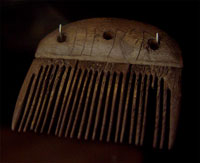Thursday, March 31, 2011
Monday, March 21, 2011
03/22/2011
So much has happened in the past two weeks that this blog has to be changed.
Esoteric knowledge is always entertaining, but the time for action has arrived. This blog will be changing to chronicle living and working as an organic farmer. The information may prove to be inspirational and will also be useful for the plant science and techniques of Organic Food Production.
If you follow the progress throughout the season you will learn just what it takes to feed people, and what you are paying for as the cost of quality food surpasses affordability. Buy local non GMO food and visit your crops! Support Organic Farms!
Esoteric knowledge is always entertaining, but the time for action has arrived. This blog will be changing to chronicle living and working as an organic farmer. The information may prove to be inspirational and will also be useful for the plant science and techniques of Organic Food Production.
If you follow the progress throughout the season you will learn just what it takes to feed people, and what you are paying for as the cost of quality food surpasses affordability. Buy local non GMO food and visit your crops! Support Organic Farms!
Saturday, March 12, 2011
03/13/2011
Audio of Ancient Music Fragments Roman and Greek Notation
Excellent Australian Aboriginal Music and Art Vid

The Vimose Comb, from Vimose, Funen, Denmark, is considered the oldest datable Elder Futhark runic inscription in late Proto-Germanic or early Proto-Norse.
This and other slightly later items from Vimose dating from circa 200-300 CE, are known as the Vimose inscriptions.
Excellent Australian Aboriginal Music and Art Vid
Runes Circa 150 CE
"The earliest runic inscriptions date from around A.D. 150. The characters were generally replaced by the Latin alphabet as the cultures that had used runes underwent Christianization by around A.D. 700 in central Europe and by around A.D. 1100 in Northern Europe. However, the use of runes persisted for specialized purposes in Northern Europe. Until the early 20th century runes were used in rural Sweden for decoration purposes in Dalarna and on Runic calendars.
"The three best-known runic alphabets are the Elder Futhark (around 150 to 800 AD), the Anglo-Saxon Futhorc (400 to 1100 AD), and the Younger Futhark (800–1100). The Younger Futhark is further divided into the long-branch runes (also called Danish, although they were also used in Norway and Sweden), short-branch or Rök runes (also called Swedish-Norwegian, although they were also used in Denmark), and the stavesyle or Hälsinge runes (staveless runes). The Younger Futhark developed further into the Marcomannic runes, the Medieval runes (1100 AD to 1500 AD), and the Dalecarlian runes (around 1500 to 1800 AD).
"The origins of the runic alphabet are uncertain. Many characters of the Elder Futhark bear a close resemblance to characters from the Latin alphabet. Other candidates are the 5th to 1st century BC Northern Italic alphabets: Lepontic, Rhaetic and Venetic, all of which are closely related to each other and descend from the Old Italic alphabet" (Wikipedia article Runic alphabet, accessed 10-26-2010).
"The three best-known runic alphabets are the Elder Futhark (around 150 to 800 AD), the Anglo-Saxon Futhorc (400 to 1100 AD), and the Younger Futhark (800–1100). The Younger Futhark is further divided into the long-branch runes (also called Danish, although they were also used in Norway and Sweden), short-branch or Rök runes (also called Swedish-Norwegian, although they were also used in Denmark), and the stavesyle or Hälsinge runes (staveless runes). The Younger Futhark developed further into the Marcomannic runes, the Medieval runes (1100 AD to 1500 AD), and the Dalecarlian runes (around 1500 to 1800 AD).
"The origins of the runic alphabet are uncertain. Many characters of the Elder Futhark bear a close resemblance to characters from the Latin alphabet. Other candidates are the 5th to 1st century BC Northern Italic alphabets: Lepontic, Rhaetic and Venetic, all of which are closely related to each other and descend from the Old Italic alphabet" (Wikipedia article Runic alphabet, accessed 10-26-2010).
The Earliest Known Runic Inscription Circa 160 CE

The Vimose Comb. (View Larger)
The Vimose Comb, from Vimose, Funen, Denmark, is considered the oldest datable Elder Futhark runic inscription in late Proto-Germanic or early Proto-Norse.
This and other slightly later items from Vimose dating from circa 200-300 CE, are known as the Vimose inscriptions.
Monday, March 7, 2011
3/7/2011
The Moon Will Be Close As Can Be On March 19, 2011.
Its A Good Opportunity To Visit The Ocean And See Exceptionally Low Tides.
TIPI 101
HERON TP
DIOCLETIAN (KNOW YOUR HISTORY)
PICK YER POISON
COUNT BASIE WITH FRANK WESS 1960
RARE MOTORCYCLES
THIS IS A GREAT CAMERA
Its A Good Opportunity To Visit The Ocean And See Exceptionally Low Tides.
TIPI 101
HERON TP
DIOCLETIAN (KNOW YOUR HISTORY)
PICK YER POISON
COUNT BASIE WITH FRANK WESS 1960
RARE MOTORCYCLES
THIS IS A GREAT CAMERA
Saturday, March 5, 2011
Subscribe to:
Comments (Atom)
